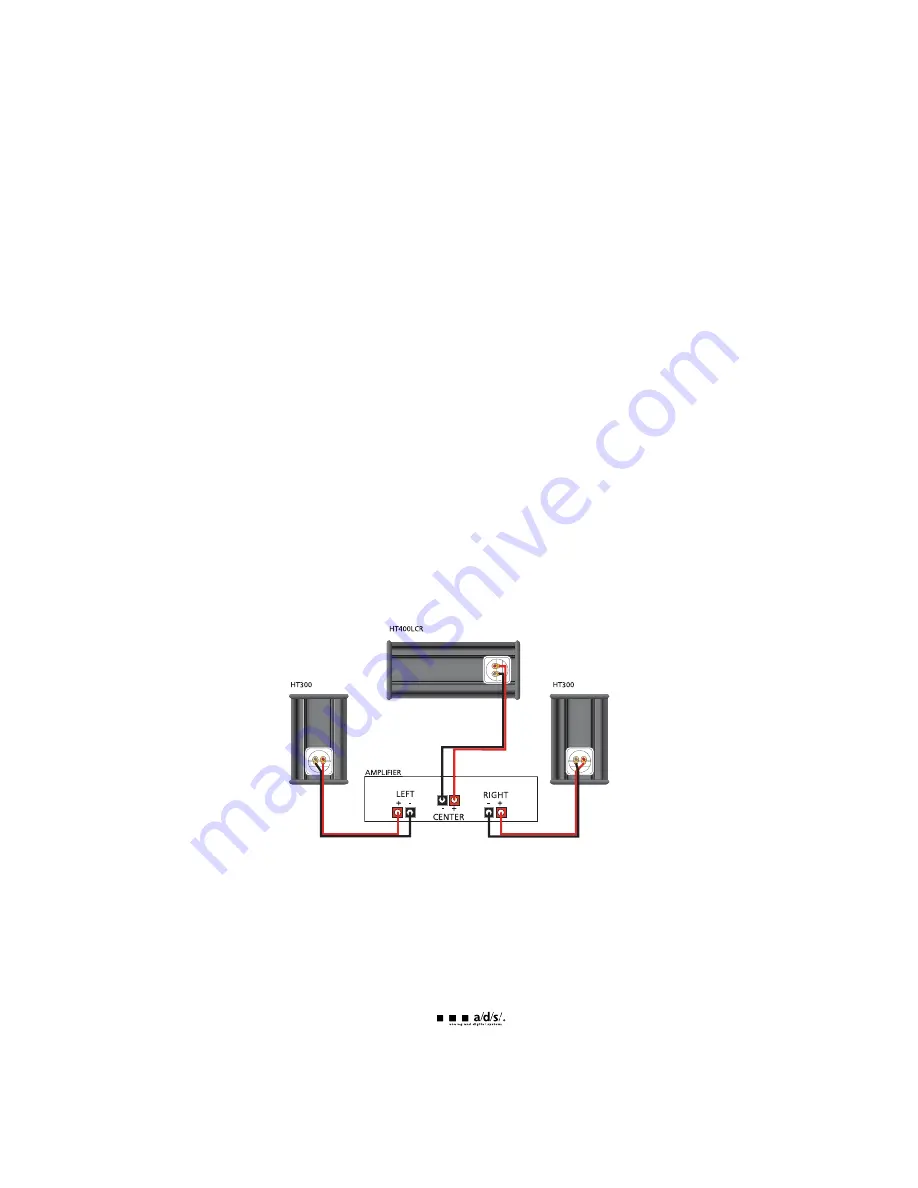
main speaker separation
A good rule of thumb is to start by arranging your preferred listening position and the left and
right speakers positions, such that they represent the points of an equilateral triangle. You
should then experiment by varying the separation and the horizontal angle of the speakers until
you reach the sonic sound stage that you prefer.
Although all of the HT series speakers are video shielded, placing them next to a TV monitor will
not typically give adequate separation. When possible, move the speakers a few feet away from
either side of the monitor. Also, when the center channel speaker is used, the left and right
speakers should be located so they are approximately the same distance from the listening
position as the center channel. If they are too far forward, you will lose integrity of the center
image. If they are too far away, separation and image width will suffer.
connections
wire
Use two-conductor stranded-type, insulated wire to connect the speakers to the amplifier. There
are many types of high performance wire available for speaker connection. Your a/d/s/ retail
dealer can recommend appropriate wire. If you want, standard "lamp" wire or "zip cord" can
be used. Use 16 gauge for runs less than 50 feet, and use 14 gauge or larger, for longer runs.
Using wire smaller than 16 gauge is not recommended.
connecting the speakers
The HT series have color-coded spring loaded input terminals. Pressing the spring loaded
terminals expose holes in the post. Insert stripped or terminated wires into the exposed hole.
Release the terminals to clamp the wire into place.
polarity
The polarity (the positive/negative orientation of the connections) for every speaker-to-wire and
wire-to-amplifier connection must be the same so that the speakers will be "in phase". If the
polarity of one connection is reversed, bass output is reduced and stereo imaging is degraded.
High frequency level switch
The high frequency level switch alters the amplitude of the frequency band from 2kHz to 20kHz.
• High (up) position on the frequency level switch gives a 3dB boost in the high frequency band.
• Low (down) position on the frequency level switch results in a flat frequency response.
Although this switch allows you to adjust for personal preference, a/d/s/ recommends that the
low position be utilized for systems that do not contain a subwoofer.
3


























